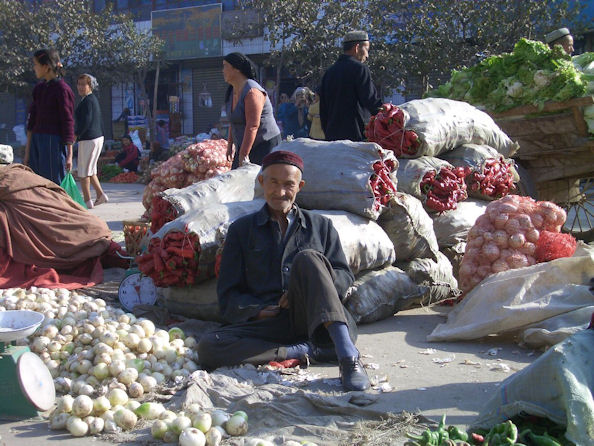 In the mid 90s, I had the coolest boss ever. He let me disappear to China for three weeks to watch folks farm and meet dour managements at state owned enterprises. China wasn’t hip back then; it was just drab. Everything was dark gray or navy and it was alarmingly quiet after the hustle of London.
In the mid 90s, I had the coolest boss ever. He let me disappear to China for three weeks to watch folks farm and meet dour managements at state owned enterprises. China wasn’t hip back then; it was just drab. Everything was dark gray or navy and it was alarmingly quiet after the hustle of London.
China’s cotton crop – the world’s largest – had failed because of an attack of boll weevil pests, unleashing all manner of drama in global cotton markets. The country was still sufficiently remote that the BBC had a service dedicated to translating the impenetrable state news service, complete with peculiar statistics. Despite spending hours reading these missives, I was still none the wiser as to what was going on with the coming year’s cotton crop and its survival was key to the fortunes of several of the stocks that I was following. So I got on a plane, hired a driver, persuaded a Mandarin-speaking colleague to join me, and headed off to stand in the cotton fields and look for boll weevils. I didn’t find many – primarily because China’s farmers had switched to more efficient pesticides –but I did discover that farmers were worried about bigger issues than the cotton crop failure. The new pesticides were far more expensive than the inadequate earlier ones, but the government cotton price rose only a little. They were worried about the future; it was getting harder and harder to raise crops and they wanted nothing more than for their kids to get an education and leave the land.
 Over the next 15 years, I climbed around refineries, petrochemical complexes, oil rigs, plastics plants, geothermal drills, pig farms, organic wineries and wind farms in Asia, Europe and the US, yet one theme recurred; resources were getting harder to find and commodity prices ever cheaper. To an economist, this dichotomy made no sense until I realized that other industries (especially pharmaceuticals and software) made it easy for investors by offering attractive investment structures and plentiful education. Real assets – timber, water, agriculture, energy, minerals, renewables – were less engaging, and they didn’t fit ‘traditional’ private equity, venture capital or mutual fund models. As a fund manager and analyst covering these industries, I’ve encountered plenty of eye rolling from bosses skeptical that real assets have any value. One sneeringly referred to real assets as “hippie stuff”.
Over the next 15 years, I climbed around refineries, petrochemical complexes, oil rigs, plastics plants, geothermal drills, pig farms, organic wineries and wind farms in Asia, Europe and the US, yet one theme recurred; resources were getting harder to find and commodity prices ever cheaper. To an economist, this dichotomy made no sense until I realized that other industries (especially pharmaceuticals and software) made it easy for investors by offering attractive investment structures and plentiful education. Real assets – timber, water, agriculture, energy, minerals, renewables – were less engaging, and they didn’t fit ‘traditional’ private equity, venture capital or mutual fund models. As a fund manager and analyst covering these industries, I’ve encountered plenty of eye rolling from bosses skeptical that real assets have any value. One sneeringly referred to real assets as “hippie stuff”.
Things are beginning to change as financial markets start to embrace real assets; natural resources were one of the largest IPO sectors in the first quarter of 2011 for instance. As to my former bosses, the one who sent me to China is running a successful and renowned carbon credit trading firm nowadays, and the eye rolling one is working out of a sketchy suburban industrial estate. What goes around, comes around.